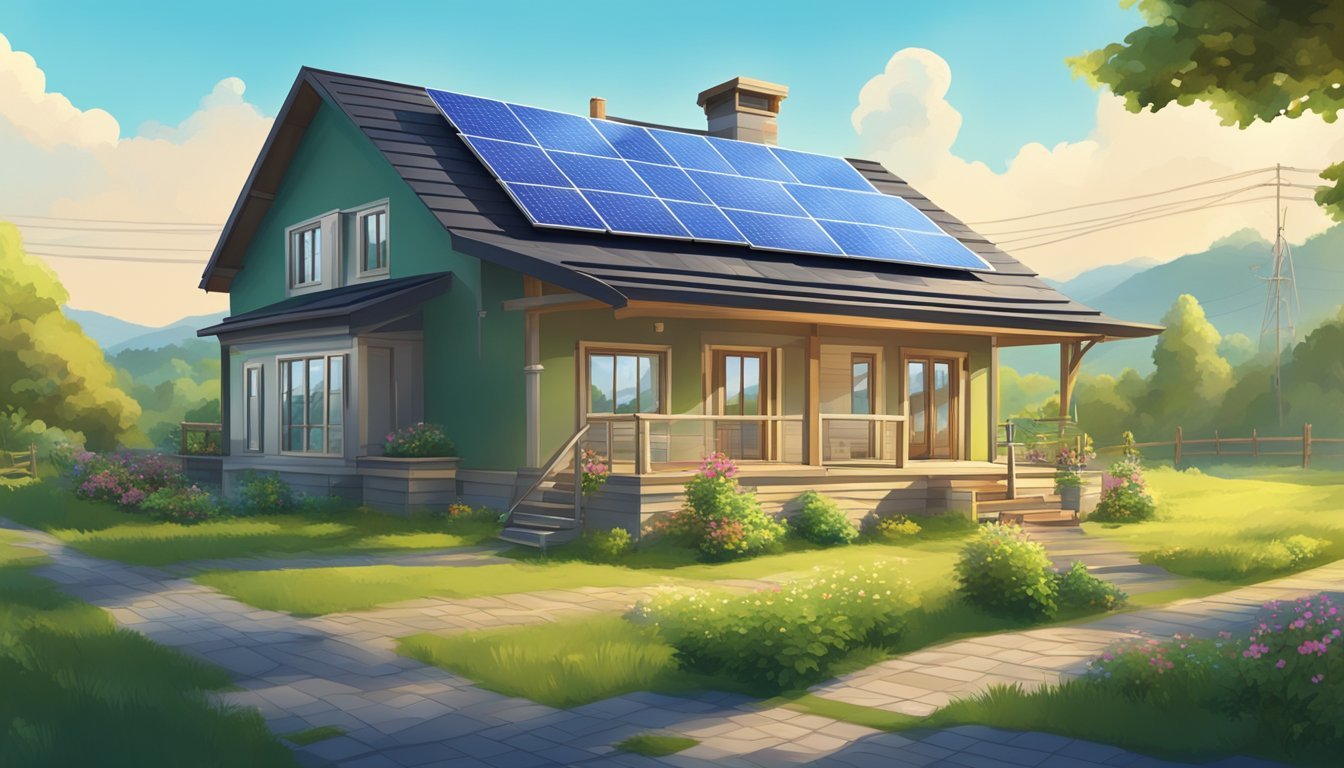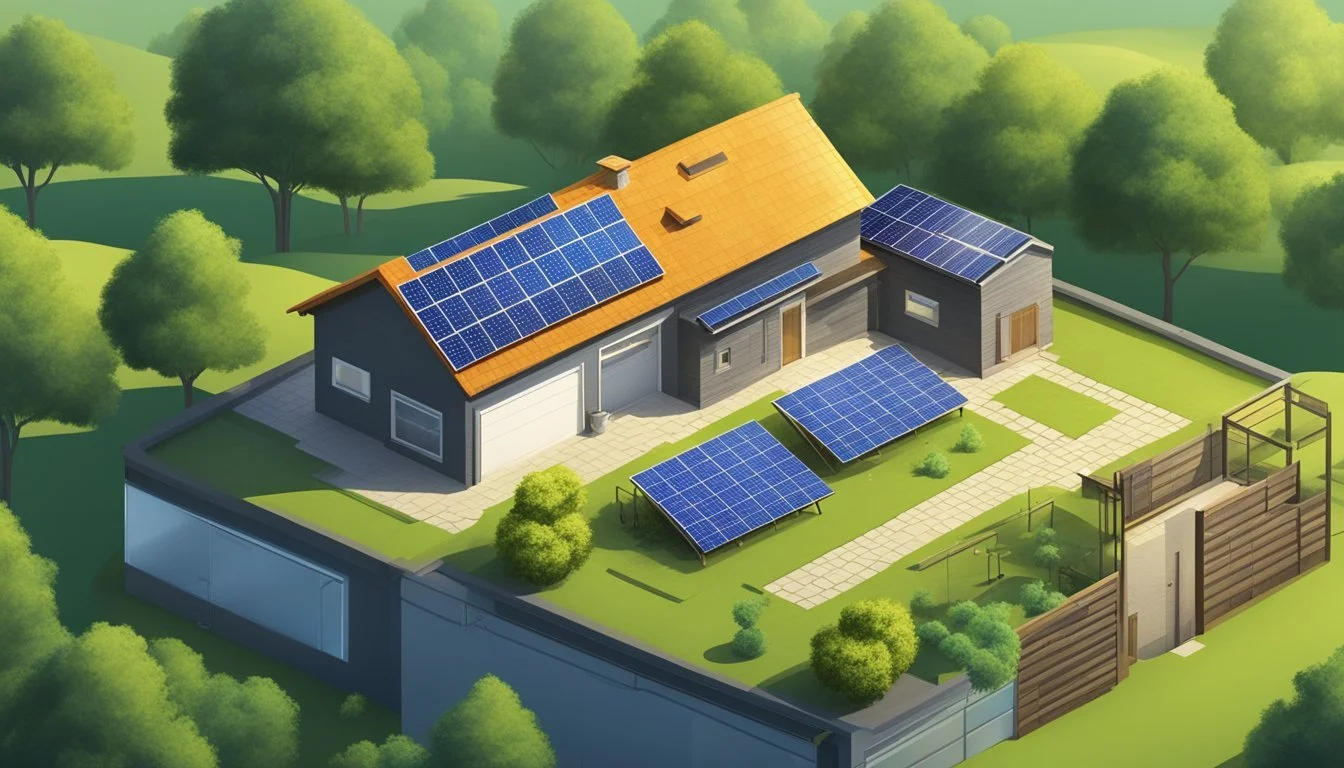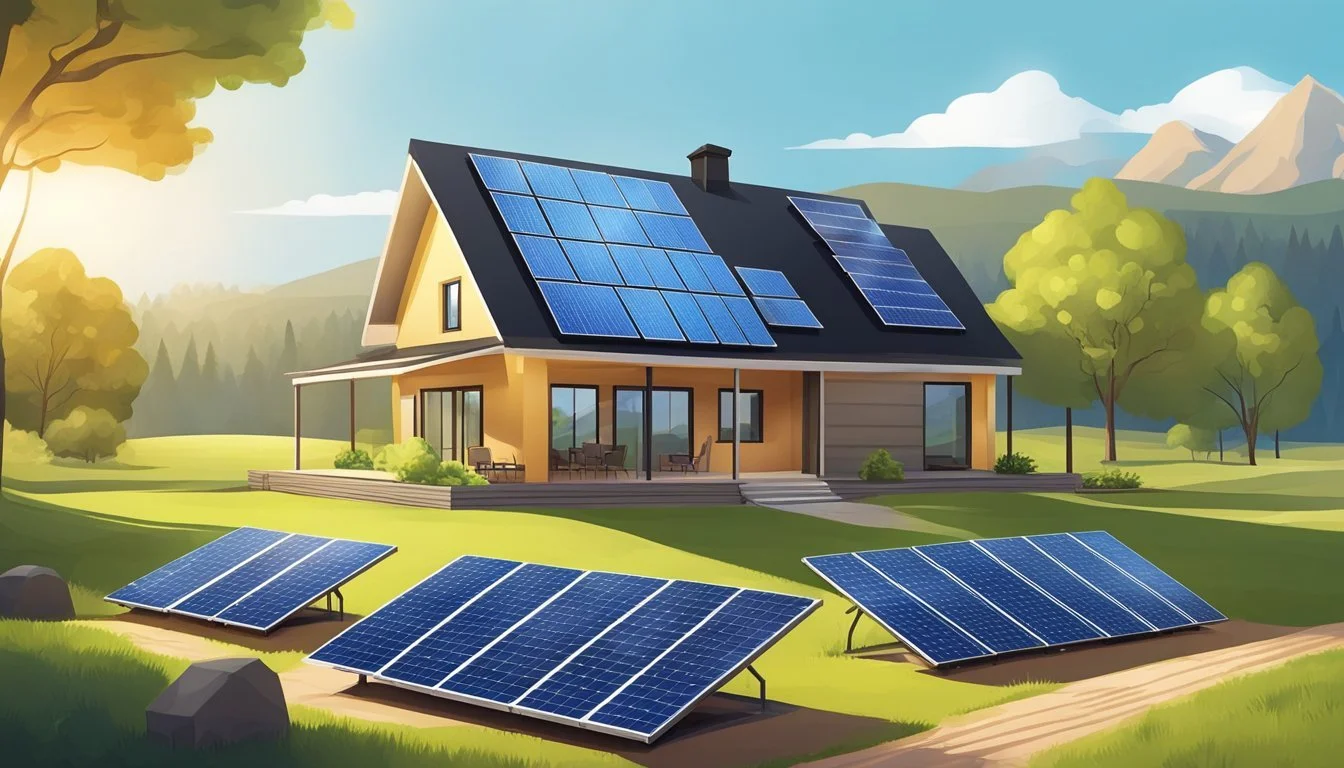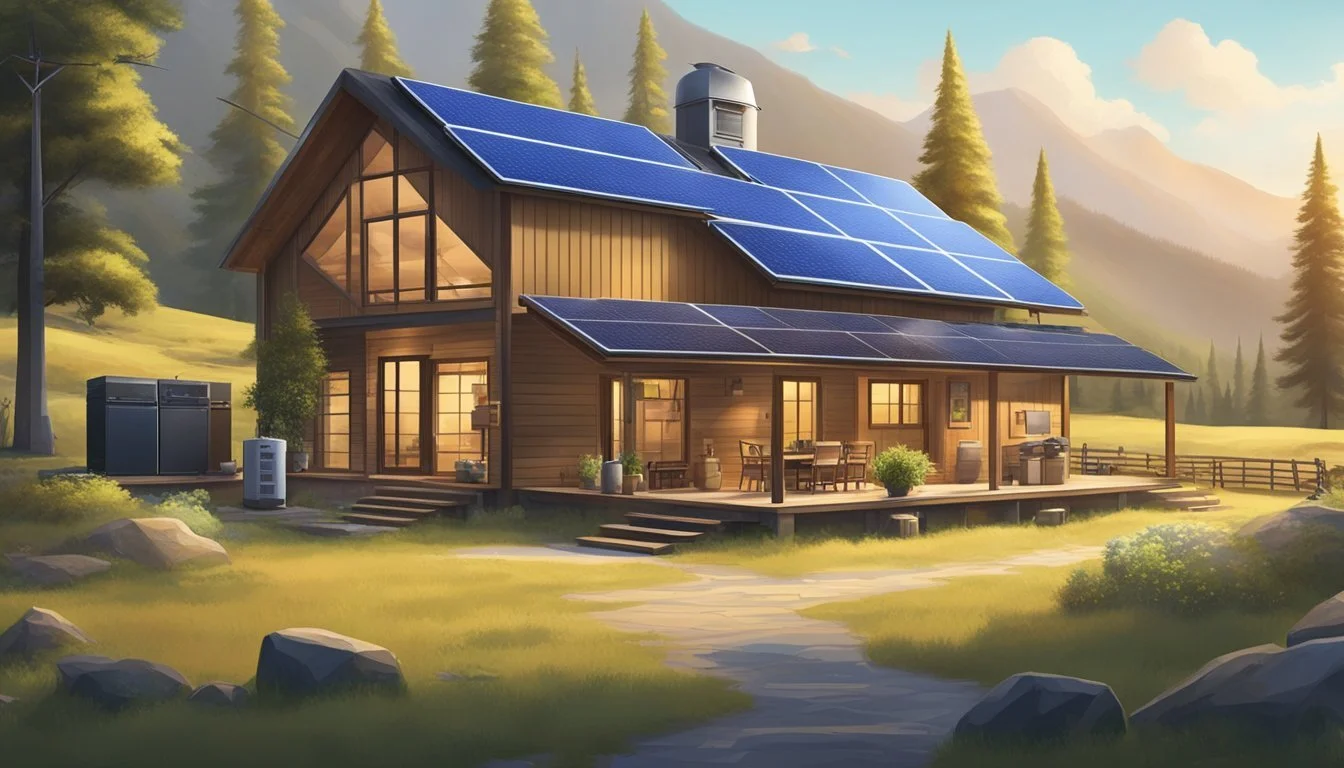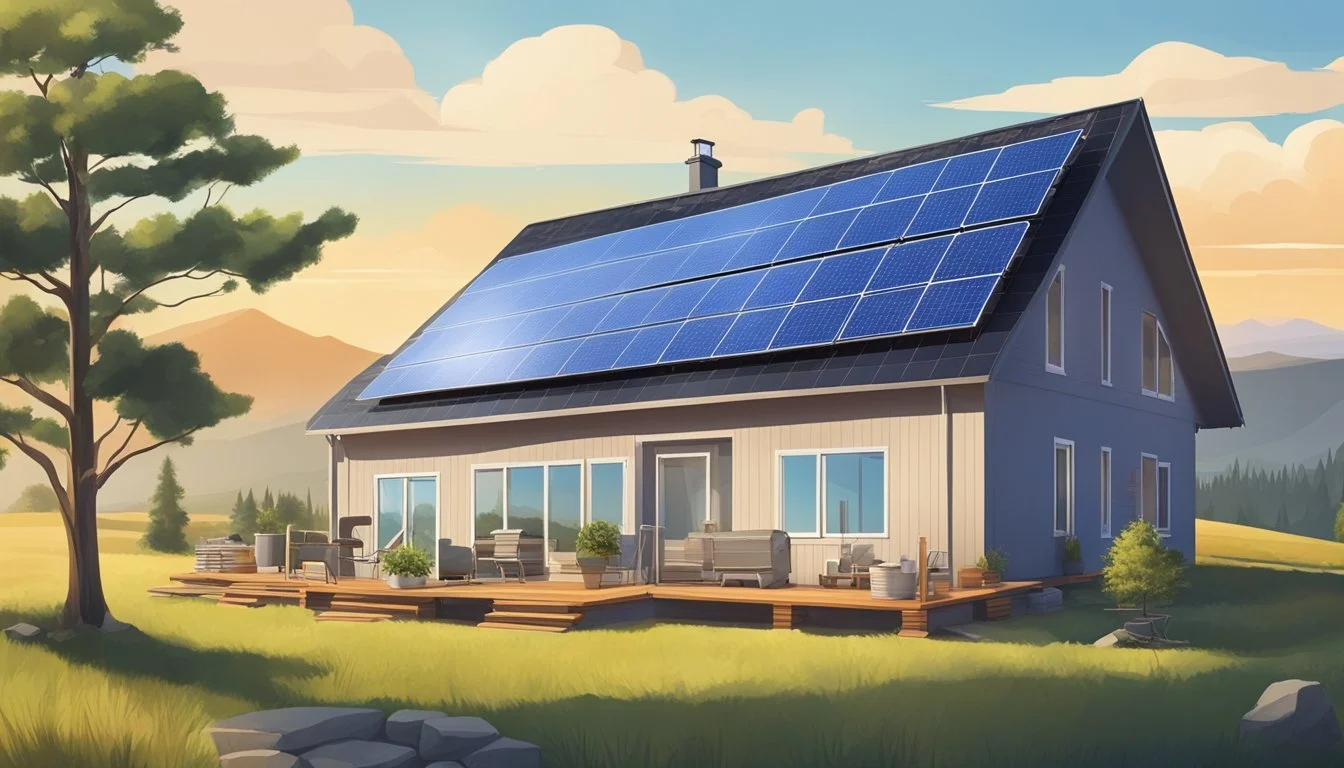Off-Grid Power Solutions
Maximize Your Homestead's Energy Independence with Solar Panels
The move towards self-sufficient living has led many homesteaders to turn to renewable energy sources, with solar panels becoming increasingly popular for off-grid power solutions. Off-grid living necessitates a reliable and independent energy system that can operate without a connection to the public electricity grid. Solar panels provide a sustainable and eco-friendly way to meet this need by converting sunlight into electrical power. This method of energy generation not only aligns with a commitment to sustainability but also enhances the autonomy of homesteaders, giving them complete control over their electricity use.
To establish an effective off-grid solar system, several key components must be integrated. The core of the system comprises solar panels, which harness the sun’s energy. This energy is then regulated by a charge controller and stored in batteries to ensure a consistent power supply, even during periods without sunlight. An inverter is also necessary to convert the stored direct current (DC) into alternating current (AC), the form suitable for household appliances. A well-designed off-grid solar system offers homesteaders a renewable and dependable power source that promotes eco-friendly and sustainable living.
Adopting off-grid solar panels is a step toward reducing one’s carbon footprint, contributing to environmental conservation. This choice reflects a growing recognition of the importance of renewable energy sources in combating climate change. For homesteaders, the investment in solar technology not only furthers ecological responsibility but also ensures a level of self-sufficiency in energy production, enabling a resilient and forward-thinking approach to rural living.
Understanding Off-Grid Solar Systems
Off-grid solar systems provide a self-sufficient source of electricity through the conversion of sunlight into electrical power, which is then stored and managed for a continuous supply, even when direct sunlight is unavailable.
Components of an Off-Grid Solar System
An off-grid solar system typically consists of solar panels, a battery bank, an inverter, and a charge controller.
Solar panels are the most visible part of the system, composed of photovoltaic cells that convert sunlight into direct current (DC) electricity.
A battery bank, usually made up of several solar batteries, stores energy for use during times when the sun isn't shining.
The inverter is a critical component that converts DC into alternating current (AC), which is the type of electricity used by household appliances.
Charge controllers regulate the flow of electricity from the panels to the batteries, protecting them from being overcharged.
How Solar Power Works
Solar power is harnessed when photovoltaic cells within solar panels absorb photons from sunlight, creating an electrical current.
Energy Absorption: Solar panels absorb solar energy.
DC Electricity: Energy is converted into DC electricity by the cells.
Energy Conversion: The inverter converts DC into usable AC electricity.
Energy Storage: Excess energy is stored in the battery bank.
Power Supply: Electricity is supplied to the home or system from batteries when needed.
Benefits of Going Off-Grid
Going off-grid with solar power brings several advantages:
Self-Sufficiency: One can achieve energy independence, which is particularly valuable in remote or rural locations without reliable access to a central power grid.
Environmental Impact: Solar energy is a clean, renewable resource, reducing one's carbon footprint.
Cost-Savings: While there's an upfront investment in equipment, over time the cost of generating one's own electricity can be lower than purchasing it from a utility provider.
Solar Panels for Homesteading
Solar panels offer a reliable and self-sufficient energy solution for homesteads. They enable homeowners to harness solar energy to power various structures and become more self-reliant, with systems that can last for decades and significantly reduce electricity costs.
Types of Solar Panels
When considering solar panels for a homesteading project, it's essential to understand the different types available. Monocrystalline solar panels are known for their efficiency and longevity; they are made from a single, pure silicon crystal and generally have a longevity of 25-30 years. Polycrystalline solar panels, comprised of multiple silicon crystals, are a more budget-friendly option but are slightly less efficient. Thin-film solar panels, flexible and lightweight, can be an advantageous choice for certain installations but often have a shorter lifespan.
Sizing Your Solar Power System
The size of a solar power system is crucial for ensuring it meets the energy demands of a homestead. To determine the appropriate system size, one must calculate the total wattage of appliances and devices that the system will power. Calculating energy consumption in kilowatt-hours (kWh) alongside considering peak sunlight hours will guide the proper sizing of the solar system. Generally, an average home might require a system ranging from 3 kW to 8 kW, but this can vary significantly based on specific energy needs.
Positioning and Installation Tips
Successful installation of solar panels hinges on correct positioning to maximize energy production. Panels should be installed where they can receive uninterrupted sunlight, often on a roof or dedicated mounting system. The angle of inclination should match the latitude of the location to optimize sunlight exposure. It's recommended to consult with a professional solar installer for site assessment. Cleaning of the panels is also a pertinent factor; they should be maintained regularly to remove debris and ensure peak efficiency. Lastly, solar inverters are a key component of the system, converting the solar energy from DC to usable AC electricity for the homestead.
In the journey toward sustainable and autonomous living, solar panels stand as a cornerstone for energy independence. Selecting the right type, sizing the system accurately, and proper installation are the steps that ensure a homestead's transition to solar power is both successful and enduring.
Energy Storage and Management
Effective energy management and storage are crucial for homesteaders relying on off-grid solar panels. Selecting the right batteries, optimizing charge controller efficiency, and monitoring the power supply are essential for maintaining a consistent and reliable energy source.
Battery Options
For homesteaders, battery banks are the linchpin of solar energy storage systems. Choosing the right battery involves considering factors such as capacity, lifespan, and environmental conditions. Two prevalent battery types are lithium-ion and lead-acid.
Lithium-ion batteries offer a higher energy density, longer lifespan, and require less maintenance. However, they come with a higher upfront cost.
Lead-acid batteries, while more cost-effective, have a lower energy density and shorter lifespan. They typically demand more maintenance and careful handling.
It's imperative to assess the trade-offs based on energy needs and budget constraints.
Charge Controller Efficiency
Charge controllers are pivotal in protecting batteries from overcharging and ensuring efficient energy storage. Two common types of controllers are:
PWM (Pulse Width Modulation): More affordable but less efficient, especially in varied sunlight conditions.
MPPT (Maximum Power Point Tracking): These controllers are more efficient, adjusting input to deliver the maximum power possible to the battery bank. They can be particularly effective in environments with variable weather conditions, despite a higher initial cost.
Efficiency in energy storage is largely dictated by the choice of charge controller.
Monitoring and Maintaining Your Power Supply
Regular monitoring and maintenance are vital to safeguard the longevity of the solar energy system. Homesteaders should implement a routine that includes:
Checking battery voltage to avoid overcharging or deep discharge
Inspecting connections to ensure they are secure and corrosion-free
Monitoring energy usage to adjust habits or system size accordingly
Cleaning panels and batteries to prevent efficiency losses due to dirt and grime
Inverters should also be examined, as they play a crucial role in converting stored DC power from batteries to usable AC power for the home. Adopting a proactive stance on maintenance can reduce the likelihood of system failure and extend the life of the components.
Incorporating Renewable Energy Sources
Homesteaders seeking energy independence are increasingly turning to renewable energy sources, specifically solar panels, to power their off-grid lifestyles. By combining multiple renewable technologies and incorporating hybrid systems with backup power, they can create more reliable and efficient off-grid energy systems.
Combining Solar with Wind and Hydro
In locations with the right climate and topography, homesteaders can complement off-grid solar panels with other renewables such as wind turbines and micro-hydro systems. The variability of solar power can be balanced by the more consistent energy provided by a wind turbine, which generates power during cloudy days or at night when solar output declines.
Micro-hydro generators rely on running water and can generate power continuously, ensuring a stable energy flow. The integration of these sources requires careful planning around the site-specific characteristics:
Solar Panels: Best in sunny climates with clear exposure to the sun.
Wind Turbines: Optimal in open, windy locations with minimal obstructions.
Micro-Hydro Systems: Feasible near consistent water flows like streams or rivers.
Hybrid Systems and Backup Power
Hybrid energy systems that utilize solar panels along with other renewable energy sources are pivotal to maintaining consistent energy availability. These systems often implement smart technology to manage power collection and distribution efficiently. For periods of low production or high energy demand, homesteaders include backup generators to ensure a continuous power supply. The backup systems generally come in two types:
Battery Storage: Stores surplus energy during peak production times.
Fuel-Powered Generators: Use diesel, propane, or biofuel to generate power during deficits.
These backup solutions provide a safety net and an additional layer of security for the energy system. They are vital components, especially considering the unpredictable nature of renewable energy availability. The right mix and sizing of backup solutions are based on individual power consumption profiles and the capacity of primary renewable installations.
Financial Considerations and Incentives
Setting up an off-grid power system using solar panels is a significant investment with potential long-term benefits. Financial planning is crucial to understanding the overall costs and the incentives available to offset initial expenses.
Costs of Setting Up an Off-Grid System
The upfront costs of installing an off-grid solar power system can vary widely based on the size and scale of the setup. Costs include solar panels, batteries for energy storage, charge controllers, inverters, and possibly a backup generator for prolonged periods of low sunlight. For a remote location, additional expenses might arise from transporting materials and hiring specialized labor. On average, homeowners may spend from $10,000 to $20,000 for a basic off-grid system, with more comprehensive systems reaching up to $50,000 and beyond.
Understanding Incentives and Rebates
To encourage the adoption of renewable energy solutions, governments offer a variety of incentives and rebates. In the United States, one notable program is the federal Investment Tax Credit (ITC), which allows homeowners to deduct a percentage of their solar system cost from federal taxes. As stated in the provided information, for example, with a 26% ITC, a $10,000 system could yield a $2,600 deduction. Additionally, local governments and states might provide their own rebates and tax credits, further improving the return on investment. Homeowners can maximize their cost savings by researching and applying for these financial benefits, reducing the net cost of their solar power system considerably.
Living Off the Grid
Off-grid living provides energy independence using solar panels, which is ideal for remote locations without access to the electric grid. Residents manage their energy, ensuring sustainability, and set up self-sufficient utilities to avoid power outages and fulfill their energy requirements.
Managing Energy Consumption
Energy requirements for off-grid living vary based on household size and lifestyle. Residents typically size their solar panel system after calculating their energy consumption to ensure a consistent power source. Energy conservation tactics such as using LED lighting, energy-efficient appliances, and superior insulation are crucial. Monitoring systems can help optimize energy usage. Adequate energy storage is often achieved with batteries to maintain power during low sun hours or inclement weather.
Typical Appliances and Power Consumption:
LED Bulbs: 7-12 watts
Fans: 35-75 watts
Pump (for water supply): 250-1,500 watts
Heater (portable): 750-1,500 watts
Establishing Self-Sufficient Utilities
Off-grid homesteads must create their own utilities for water, heating, and waste. A solar-powered pump draws water from wells, supporting the water supply and any irrigation system. Solar water heaters can provide hot water needs. For reducing overall energy consumption, integrating passive solar design with added insulation in homes ensures temperature regulation with minimal use of heaters and fans. Backup generators or wind turbines complement solar arrays, offering additional resilience against extended cloudy periods.
Utility Systems:
Water: Solar pump, filtration
Heating: Solar heaters, wood stoves
Waste: Septic systems, composting toilets
Environmental Impact and Sustainability
Off-grid solar solutions are instrumental in reducing greenhouse gas emissions and fostering environmental sustainability. Homesteaders can take a proactive role in mitigating climate impacts through the adoption of solar panels.
Reducing Carbon Footprint
Solar panels are a cornerstone of renewable energy, significantly lowering one's carbon footprint. When a homesteader transitions from conventional power sources, chiefly reliant on fossil fuels, to solar energy, they cut down on greenhouse gas emissions. It's noteworthy that the production of electricity via solar panels releases zero emissions of greenhouse gases during operation. This shift reduces the overall contribution to greenhouse gases, which are implicated in global warming.
Average carbon footprint reduced per homestead adopting solar power: substantial
Key factors contributing to a reduced carbon footprint:
Zero emissions during electricity generation
Minimal reliance on fossil-fuel-driven power grid
Contribution to Environmental Preservation
Sustainability and eco-friendliness are hallmarks of utilizing off-grid solar systems. The environmental impact of solar panels extends beyond just reduced emissions; it encompasses broader environmental preservation efforts. By decentralizing power production, solar panels lessen the need for extensive infrastructure associated with traditional grid systems, which often disrupt natural habitats and utilize significant water resources.
Environmental Preservation Benefits of Solar Power:
Diminished habitat loss and ecosystem disruption
Lower water usage compared to conventional power generation systems
Solar panels constitute a clean, sustainable energy source that enhances environmental sustainability without contributing to the pollution typically associated with power generation. This green approach aligns with the principles of eco-friendliness and contributes to ongoing environmental conservation initiatives.
System Installation and Legalities
Effective installation of off-grid solar panel systems on homesteads requires careful navigation of the permit landscape and understanding of zoning laws. Homesteaders must also be aware of the potential implications and negotiations required with utility companies, especially when considering a grid-tied system with net metering capabilities.
Permit Requirements and Legal Considerations
When pursuing off-grid solar installations, homesteaders must obtain the correct permits from local government authorities. Permitting requirements can differ significantly based on location and may include building permits, electrical permits, and specific solar installation permits. Below is a general overview of the typical process:
Application: Submission of detailed system designs to local building departments.
Review: Authorities review the plans for compliance with local building codes and zoning regulations.
Approval: On meeting all standards, a permit is granted, allowing for legal system installation.
It is essential to adhere to zoning regulations as they dictate where and how solar panels can be installed. Some areas may have restrictions based on historical preservation, aesthetic considerations, or land use, which could affect system placement and composition.
Dealing with Utilities and Regulations
While off-grid systems are independent, homesteaders may consider a grid-tied solar system to take advantage of net metering. Here, they must be well-informed about utility company policies and regulations. The key points include:
Utility Agreements: Homesteaders should negotiate with utility companies to understand if net metering is available and learn about any associated fees or regulations.
Interconnection: Installation of a grid-tied system requires approval for interconnection to ensure safety and reliability standards are met.
Standards Compliance: The installed system must comply with the utility company's technical requirements, including standards like IEEE 1547 for interconnection.
In summary, homesteaders must be meticulous in understanding the legalities surrounding off-grid solar system installation, which encompasses acquiring the proper permits, complying with legal and zoning mandates, and effectively communicating with utility companies if opting for a grid-tied system.
Maintenance and Trouble Shooting
Effective maintenance and diligent troubleshooting are integral to maximizing the performance and longevity of off-grid solar panel systems for homesteading.
Regular Inspections and Cleaning
Regular inspections ensure that off-grid power systems function optimally and safely. They should perform a thorough inspection bi-annually to check for any physical damage, loose connections, or exposed wires that may pose risks or reduce efficiency.
Visual checks: Inspect solar panels for dirt, debris, and shading from new plant growth.
Battery maintenance: Verify that battery terminals are corrosion-free and that the batteries hold their charge.
Cleaning: Use soft cloths and non-abrasive cleaners to gently clean the panels.
Identifying and Addressing System Failures
When systems fail, troubleshooting is crucial for quick recovery and continuous power supply.
Backup generator: Test regularly as part of a maintenance schedule to ensure readiness during blackouts.
Voltage checks: Monitor system voltage levels to address inconsistencies in power output, identifying when direct current (DC) or alternating current (AC) levels fall outside the normal range.
Error codes: Many modern systems display error codes that help pinpoint issues quickly.
Blackouts: In case of power loss, check connections and controllers first to rule out simple issues before proceeding to in-depth troubleshooting.
Conclusion
Off-grid solar systems provide a route to self-sufficiency for homesteaders. They are crafted to stand the test of time, usually built with durability and flexibility in mind. The heart of these systems, solar panels, are renowned for their longevity and ability to convert sunlight into a clean, eco-friendly power source.
These energy systems are not only sustainable but also customizable. Each component, from the charge controller to the inverter, aligns with the unique energy requirements of a homestead. Battery storage options, such as LiFePO4 or lithium-ion, bring enhanced efficiency and lifespan to the system, solidifying the durability of off-grid setups.
Maintenance remains minimal, yet critical – regular cleaning and inspections ensure optimal performance and prevent system downtimes. By investing in an off-grid solar energy system, homesteaders gain control over their power usage and become stewards of the environment.

